I Didn’t Give Up My Parking Spot to a Mom With an Infant — I Served Her a Reality Check

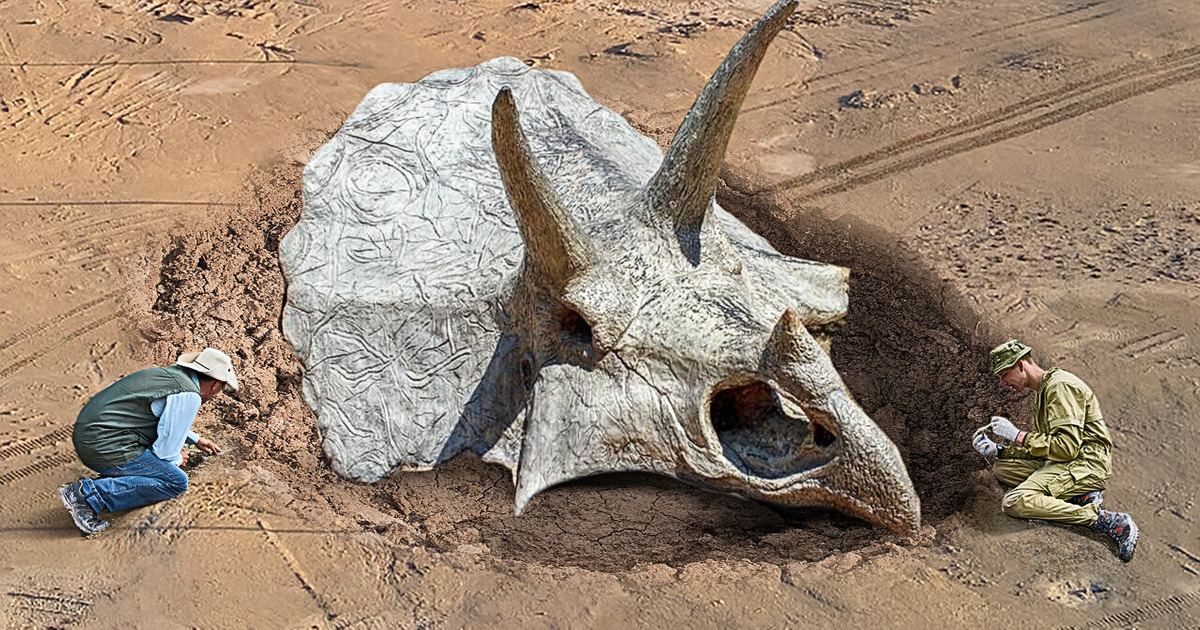
Humanity has been looking to the stars, searching for secrets that outer space is hiding. But deep underground, within the soil of our own planet, there are literal troves of fantastic things just waiting to be discovered.
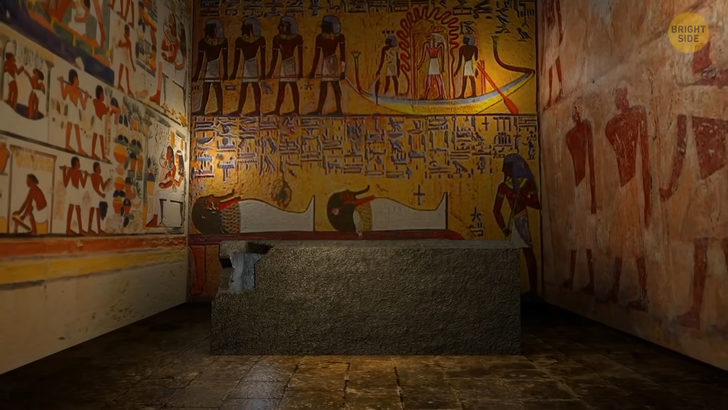
How can you talk about excavations and not mention Egypt? In 2019, archeologists uncovered the tomb of a high official in south Saqqara who lived about 4,400 years ago. His name was Khuwy, and the hieroglyphs on the walls of the tomb recited his many titles, one of which was the “‘sole friend’” of the pharaoh of the time.
The discovery could’ve been pretty usual for Egypt if not for the tomb’s interior. The walls, the ceiling, and even parts of the floor were covered in hieroglyphs, pictures, and intricate patterns. But what surprised the scientists the most was how well-preserved the colors of those images were. Despite the cracks and chips on the walls and the ceiling, they were still bright and vivid, almost as if they had been painted recently.
In Israel, a whole city was discovered by archeologists in 2019. It dates back 5,000 years to the Early Bronze Age and was home to about 6,000 people. Millions of tools, fragments of pottery items, and stone vessels were found at the site. Scientists say the city was so huge it could be called the New York of the period. The “megalopolis” was carefully planned, with dozens of streets, alleyways, and public and residential areas. Archeologists state that the citizens used to live and trade not only with different regions but also with various cultures and kingdoms.

Bar Hill is an Iron Age settlement in eastern England, and archeologists suddenly stumbled upon a very unusual thing there. As they were scouting the area, they looked inside one particular ditch and found thousands of frog bones. Later calculations showed more than 8,000 bones belonged to frogs and toads. There were no signs of damage — the bones lay in heaps and piles.
Scientists have no idea what could’ve drawn so many frogs and toads to a single place. It’s known that local people of the time ate frogs, so the settlement’s inhabitants could’ve brought them there. Other versions state that the frogs could’ve come for the large amounts of insects feeding on the crops, or they may have been looking for a body of water and got trapped in the ditch. As for now, the frog mystery remains unsolved.
Not so much mysterious as amusing, a nearly 1,800-year-old insult was found carved in stone not far from Hadrian’s Wall in England. An ancient Roman fort just south of the wall had a lot of writing tablets. But this particular one was especially curious because of its contents. The stone mentioned some Secundinus and said a pretty nasty thing about him. In fact, this is the first stone graffiti ever found that indicates Romans did have quarrels among themselves.
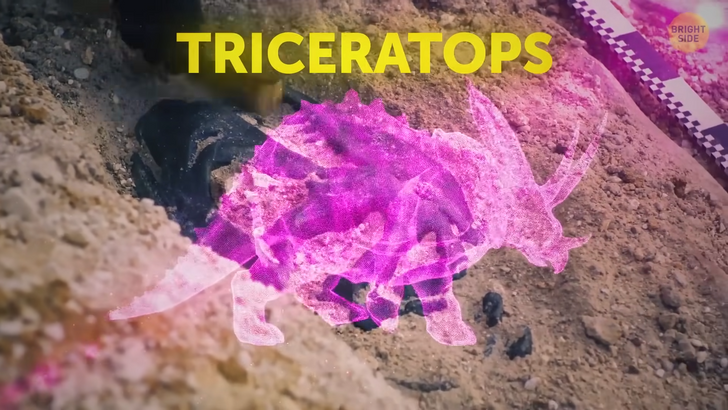
A rancher in Wyoming, not far from the town of Newcastle, was going about his ranching business when he suddenly stumbled upon a weird bone sticking out from the soil. As he carefully dug it out, he realized the bone belonged to a huge creature — it was larger than a bear. But even so, there were no bears in the area.
The rancher called scientists to figure out what it was all about. When they excavated the parts, they ended up with three skeletons of dinosaurs — triceratops, to be precise. Researchers were astounded by the discovery for two reasons: first, the skeletons were surprisingly complete — there were limb bones, skull parts, feet, and parts of tails.
Second, triceratops had been considered loners because all the previously found skeletons were found alone. In this case, there were three of them; one seemed to be a youth, while the two others were probably its parents. Judging by the tooth marks on the bones of the largest of the three, a T. rex attacked the family, and they couldn’t escape from the huge predator.
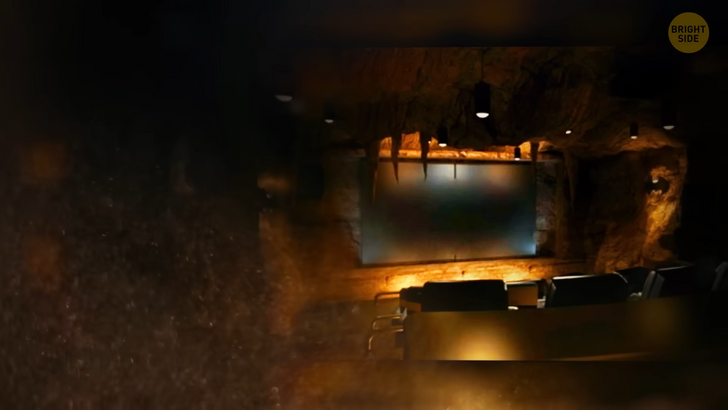
The Catacombs of Paris are yet to be fully charted, and strange things keep coming up down there. One of them was found in August 2004. The local police were having a routine training exercise in the caverns not far from the Eiffel Tower when they unexpectedly came upon a large cave transformed into a fully equipped movie theater.
The chamber had an arena where the viewers would sit, a full-sized screen, a projector, and many movies to watch. Interestingly, they were all regular ones, featuring ’50s’50s noir films and more recent pictures. There was also a second, smaller cavern adjacent to the first one, which was used as a restaurant. Someone installed an electricity system and at least three phone lines in the underground cinema.
But the most sinister thing happened when the officers returned to the site three days later to further investigate the matter. They found that all the power cables and phone lines had been cut, and a mysterious handwritten note was lying in the middle of the floor, saying, “Do not try to find us.” Nobody still knows who built that underground movie theater and why.
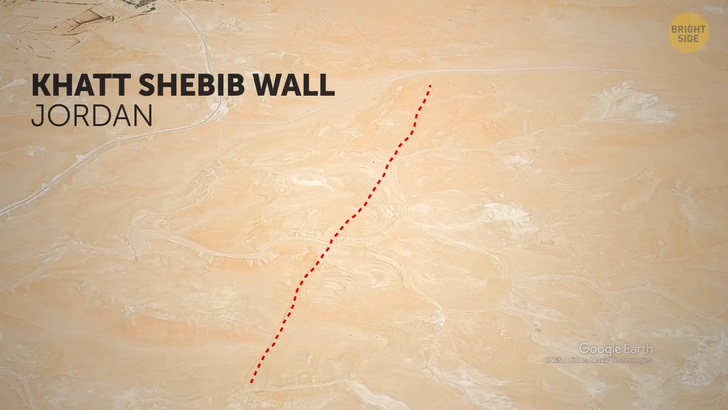
In 1948, the first report came about a puzzling 93-mile-long wall built in Jordan. It’s still unknown who made it, when, and why. Its purpose is not defensive: it was too low and narrow to have protected anything from anyone. It lies in ruins today, of course, but when it was still quite new, most of it was about 3 feet tall and 1.5 feet wide.
The most popular theory explains that the strange wall might have served as a farmland boundary. Researchers found traces of ancient agricultural lands to the west of the wall. The boundary might have protected those from hungry goats emerging from the east with nomadic tribes.
While we’re still in Jordan, there’s one more mystery here: stone circles that date back 2,000 years. They’re pretty big, with a diameter of about 1,300 feet or more. So far, scientists have discovered 11 of these Big Circles. Yes, that’s their official name. Still, they’re just a couple of feet high, making them even more puzzling.
Originally, researchers believed they were huge corrals for animals, but there are no openings between the stones the circles are made from to let people or cattle in or out. Currently, no one knows who built these ancient structures or why.
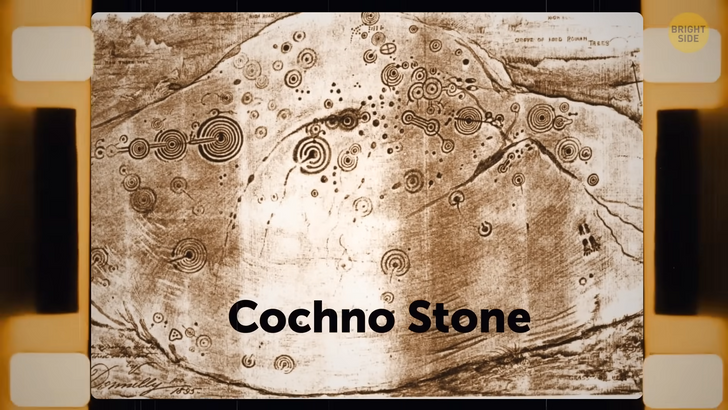
Archeologists in Glasgow excavated a 5,000-year-old stone slab in 2016... and then buried it again. The slab is called the Cochno Stone and has been known to the locals since the 19th century. The stone Is large and flat, measuring 43 by 26 feet, and has swirling decorations that had been found at many other prehistoric sites across the globe.
The stone was first fully excavated in 1887, but within the following decades, it was covered in graffiti by unknown people. So to avoid further damage, a group of archeologists buried it in the ground again in 1965. And then, in 2016, another group of researchers unearthed the Cochno Stone again to record the artwork using modern photography and surveying techniques.
You’ve heard all about Stonehenge, but what about the Super-Henge? In 2015, archeologists couldn’t believe their eyes when they discovered a whole number of stone monoliths just a couple of miles away from Stonehenge. They had once stood upright, but about 4,500 years ago, the wind and erosion of the ground must’ve pushed them over — which is why nobody had discovered them earlier.
Their purpose remains unknown, but scientists have a few theories. It could’ve been a giant Neolithic monument, or it could’ve formed a C-shaped “arena” leading down to the Avon River nearby. The springs and a valley completed the picture, so the Super-Henge might have served as some sort of a decoration or even as part of a larger structure combined with Stonehenge not far away.











